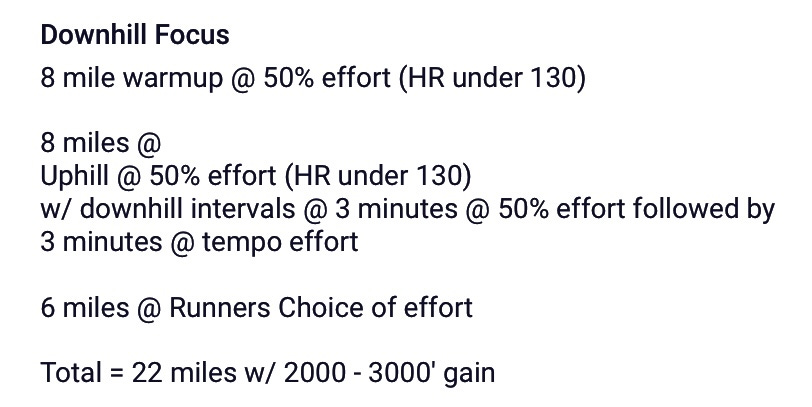Last Friday, I went out for a 22-mile run that tested multiple facets of my race prep for the Vermont 100K, from fueling to pacing to simply running that far and not feeling completely trashed afterward. (Worked was fine. Wrecked, not so much.)
Twenty two miles is a long way to run no matter how you look at it, yet one of the unique facets of this particular outing was that I covered 95 percent of it at an effort level that would be considered extremely easy. My average heart rate for the entire 4-hour outing was 125 beats per minute, and I broke 140 exactly once.
In order to maintain that consistent low Zone 2 effort, I walked nearly every hill and held myself back whenever my engine felt like revving into a higher gear. The remaining five percent came from running downhill at tempo effort: comfortably hard, but not light your quads on fire hard.
This is what it looked like on my training calendar:
While I realize a 22-mile training run might not translate that well to everyone’s experiences, I thought it would be fun to analyze what was happening during those four hours because there were a number of universal lessons that can apply to everyone’s running.




